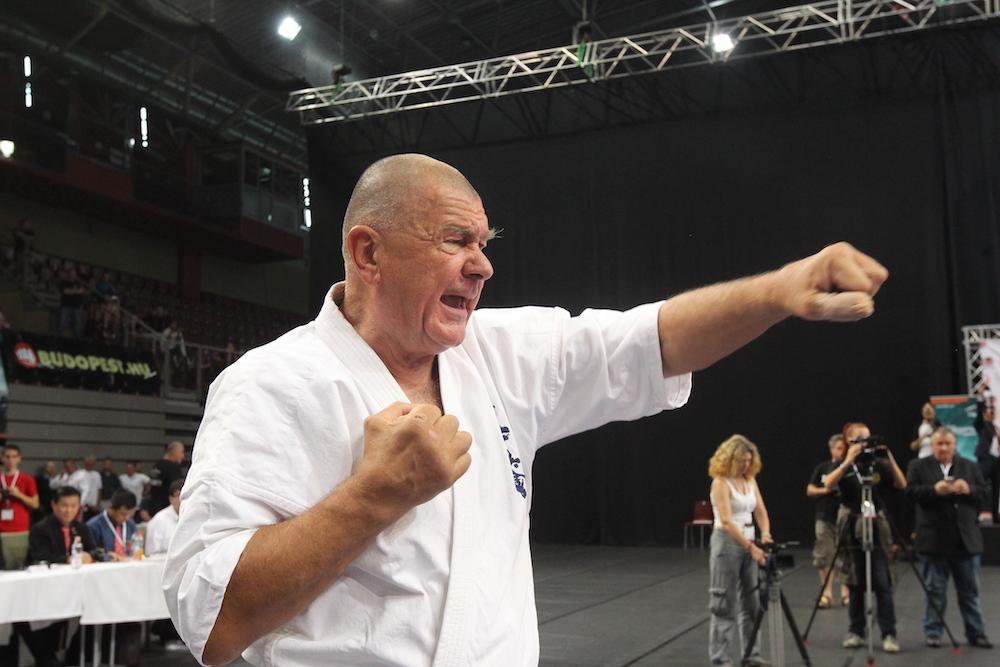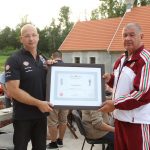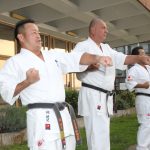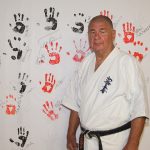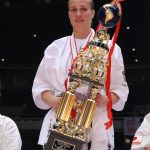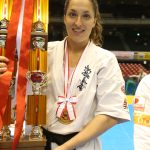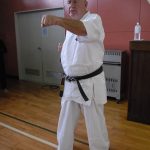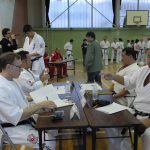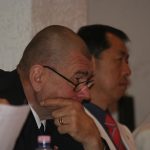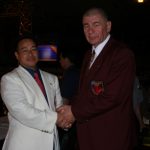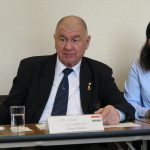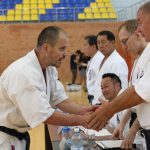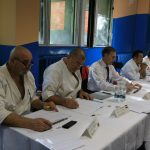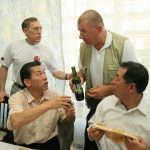Shihan Furko Kalman, who led WKO Shinkyokushinkai in Hungary for a long time, and influenced many in Europe and around the world, passed away.
Shihan Furko Kalman has passed away
Since he was enjoying his daily life until 5 days before his death, this news shocked many, and because he held an important position in the Hungarian Defence Forces, it was reported on newspapers and various media in Hungary. The funeral will be held on August 26 as a military funeral, that will be organized at the level of a state funeral.
In remembrance of Shihan Kalman and his achievements, when looking back at his Karate life, a deep respect towards Sosai Oyama, and a love towards Kyokushin Karate can be seen. Shihan Kalman’s Karate life is also the history of Kyokushin Karate in Hungary, and is a reflection of the great influence he had on the budo and martial arts community in Hungary.
The history of Kyokushin Karate in Hungary started in 1972 at the Hungarian University of Physical Education. Back then, due to the trend of the times, budo and martial arts that were unrelated to the Olympics were close to nonexistent in Hungary. Shihan Kalman, who graduated from the university in 1971, was training Judo at the time. Even after graduation, he continued his Judo training while carrying out his duties in the military.
The turning point was when Shihan Attila Meszaros of Sweden visited his hometown in Hungary, and held a seminar at the university for the judo and wrestling departments. Shihan Kalman attended this seminar. As mentioned above, during those times in Hungary, Karate was not seen in a positive light, but Dr. Ferenc Galla, the head of the department, accepted the arrangement of the seminar. Shihan Meszaros looks back at the event in the following manner.
“I hear a lieutenant soldier coming from Szolnok the next day. I thought it would be interesting. Kálmán also came in and entered the line. It didn’t take many minutes for me to notice with interest what he followed and what I showed. That’s how we worked, but after a while I had to go back to Sweden, I had a dojo with more than a hundred members waiting for work. However, the connection remained. After that, I ended up teaching several times how to judge judicial training. A group was formed who worked hard. I’m glad to see that many of that group are still here today. Over the years no one has looked down on karate.”
After training with Shihan Meszaros, Shihan Kalman concentrated on Kyokushin Karate, became the Branch Chief of Eastern Hungary, and laid the foundation of Kyokushin in Hungary.
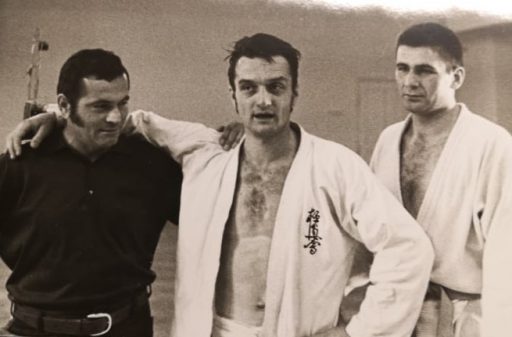
In 1979, he visited Japan for the first time, finally met Sosai Oyama, and fulfilled his dream of training at Sohonbu Dojo. In the official records still left in Japan, Shihan Kalman’s name first appears in “Power Karate”, the official magazine of Kyokushinkaikan at the time, in an article that features the IBUSZ Oyama Cup in 1983.
This tournament was an important event also for Sosai Oyama, for it was expected to establish a bridgehead for the further spread of Kyokushin Karate into Eastern Europe and Russia during the Cold War. The tournament was held successfully with 15,000 spectators. Shihan Kalman took part in the organizing work as the Branch Chief of Eastern Hungary, and challenged for the 3rd Dan exam at the grading held after the tournament. This exam left a deep impression on Sosai Oyama, and the details are written in his book “Waga Karate Budo Kyoiku”. In this book, the main focus is on the wakajishi, the uchideshi of Sosai and their way of life, and his anxiety towards the youth of Japan at the time, and his strong will to guide them with Kyokushin Karate. It also mentions the exam of Shihan Kalman, as an example of when Sosai was deeply touched during his overseas visits.
“What impressed me, was one day, when I observed the grading exam of the Hungary Branch. That day, the person taking the exam was a 37 year old leader of the airborne unit in the Hungarian Air Force. The person responsible for the eastern part of Hungary, Kalman. Currently 2nd Dan. He was planning to challenge for the 3rd Dan. Many may know, but in the Kyokushinkaikan, a 30 man kumite is mandatory for the 3rd Dan exam. However, this is for the general class, and for those in the senior class, depending on the case, it is exempted. His age of 37, in Japan, would be categorized as a member of the senior class. Therefore, as an observer of the exam, I proposed “Let him do a 10 man kumite, and then finish with some kata.” Normally, this is where the examinee shows a sigh of relief. However, in this case, the examinee replied with the request “Osu, Kancho, let me do the 30 man kumite.” and I felt a bit embarrassed with my proposal. Actually, what I wanted to share, is what happened from here. This man really completed the 30 man kumite. 2 minutes each, 30 opponents, a total of 60 minutes. Exactly 1 hour. This in itself is worthy of praise, but what really stood out for me, is the kiai he had, “Kyokushin!” for each punch and kick he carried out, and he also shouted “Kyokushin!” for each punch and kick he received. The way this 37 year old fought, was intense and passionate. I had to catch my breath.
However, it was early for me to be surprised. Astonishingly, the examinees after him, every single one of them, shouted “Kyokushin!” with each offensive and defensive technique. After the grading, I asked Branch Chief Adamy, the meaning of this, and then he replied. “The reason behind the kiai, “Kyokushin!” after an offensive technique, is to show how strong Kyokushin Karate is. The reason behind the kiai “Kyokushin!” after a defensive technique, is to show the perseverance and toughness of Kyokushin Karate.” After hearing this explanation from Branch Chief Adamy, I thought “This is it!”. This is the truth, and that there is nothing truer than this. Since this is so plain and simple, and the truth is so ordinary, we probably do not realize this in our daily lives. There is an expression of getting caught off guard, but this was completely unexpected for me.”
Sosai Oyama wrote that he saw in Shihan Kalman, a budo spirit that he felt was being forgotten by the Japanese people. In the Power Karate magazine, there is a photo of Shihan Kalman taking part in the kumite exam, while receiving kiai from Shihan Collins, who had a shinai (bamboo sword) in his hand. Shihan Collins, who watched the kumite exam of Shihan Kalman up close, looks back at the event in the following manner.
“The Ibusz Oyama Cup in 83 was an important event for the Hungarian Organization, especially for Shihan Kalman who was the leading figure in Kyokushin and remained so up until his passing. Anyway, we planned to have a grading as Sosai was the guest of honor. Sosai was satisfied with Shihan Kalman’s technical skills so as time was short Sosai thought that was enough. But Shihan Kalman wanted to have his 30 man Kumite, Sosai agreed and so it started. Shihan Kalman was not the sort of person to give up, this he showed throughout his life. Anyway, as the kumite continued Shihan was getting a little tired so at this time, I thought it was time to give him some support, so out came the shinai and my shouting soon put him back on track.”
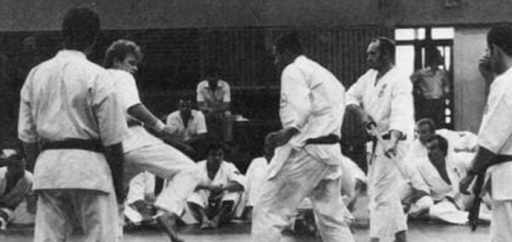
Afterwards, Shihan Kalman visited Japan again to train at the Sohonbu Dojo, and he learned Kyokushin Karate close to Sosai. The photos taken during this stay, can be confirmed in the Power Karate magazine and the Kyokushin Karate Yearbook.
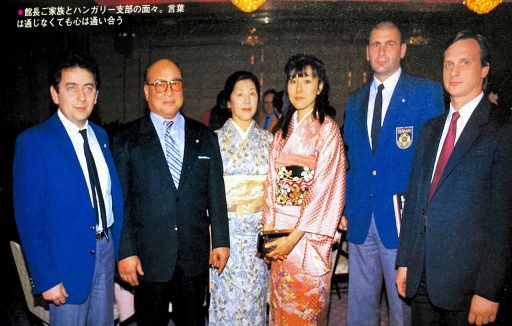
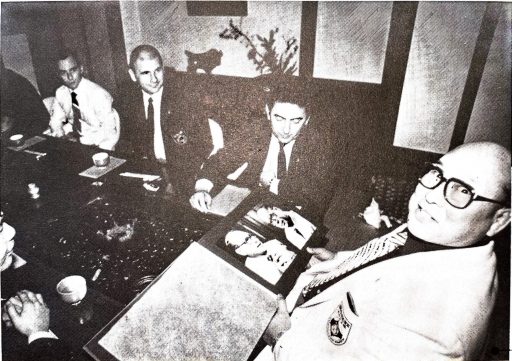
After returning to Hungary, he founded the Banzai Kyokushin Club, did his best to spread Kyokushin Karate in Hungary, and the number of members continued to increase. His influence in the Hungarian Defence Forces is very strong. Since he was the leader of the airborne unit and special forces, their training methods were established by Shihan Kalman, and this means that the Hungarian people during the mandatory military service era were all trained by Shihan Kalman in some way. Even the members who join the Hungarian Defence Forces now, follow the training methods designed by Shihan Kalman.
As mentioned above, when Shihan Kalman started his Kyokushin Karate training, marital arts that were not related to the Olympics did not exist in Hungary, but some of the students who were trained by him in the military and the dojo moved on to budo and martial arts other than Karate, and various dojos and gyms were established. Therefore, Shihan Kalman is seen by many to be the “father of martial arts in Hungary”.
At the same time, Shihan Kalman disliked individual arrangements or modifications to the Karate curriculum he learned from Sosai. He deeply studied other Kobudo (ancient Japanese martial arts) and Japanese culture, but the objective was to deepen his understanding of Sosai and the meaning of the techniques. At times when he had confusion or trouble with the trainings and teachings, he always returned to what he learned from Sosai, and until the end, had a strong focus and preference on the origins of Kyokushin.
The deep admiration and respect towards Sosai was demonstrated at the Mas Oyama Memorial Cup organized in 2014 to mark the 20th anniversary of the death of Sosai Oyama, and at the memorial training held before the tournament, many Branch Chiefs and competitors from various countries participated, and in a solemn atmosphere, the mind of WKO Shinkyokushinkai around the world became one.
The Hungary Branch, which followed and protected the teachings of Sosai, developed many strong competitors, especially Veronika Szovetes, who won the honor of becoming the first women open weight World Champion in 2007, when the category was introduced for the first time at the 9th World Open Karate Championship. At the 11th World Open Karate Championship, Csenge Szepesi became the winner, and once again demonstrated the strength of the Hungary Branch to the world.
In addition, the Hungary Branch organized the 2nd Karate World Cup in 2001, as the 1st world tournament held outside of Japan, and this played a large role in taking the organization to the next step and the next generation.
For WKO, he is known for his long-term work as a member of the WKO Grading Committee, as a senior member with the 8th Dan, the highest grade in WKO. As a direct student of Sosai, he watched over the succession of tradition at the WKO Grading Exams.
Due to the sudden news of his death, WKO Shinkyokushinkai members around the world are in the midst of deep sadness, but the Hungary Branch, in reflection of Shihan Kalman’s unique personality, trained and developed many capable Branch Chiefs, led by Shihan Kaloczi, and contributed to the expansion of the organization, while also producing excellent students and entrepreneurs, such as Shihan Janos Zsuga, who has supported the World Championship as a special sponsor. With such members, who have inherited the ideas and teachings of Shihan Kalman, the WKO Hungary Branch will surely continue its further growth in strong unity.
Memorial messages from the Shihans who had a close relationship with Shihan Kalman
Shihan Howard Collins
The Ibusz Oyama Cup in 83 was an important event for the Hungarian Organization, especially for Shihan Kalman who was the leading figure in Kyokushin and remained so up until his passing.Anyway, we planned to have a grading as Sosai was the guest of honor. Sosai was satisfied with Shihan Kalman’s technical skills so as time was short Sosai thought that was enough.
But Shihan Kalman wanted to have his 30 man Kumite, Sosai agreed and so it started. Shihan Kalman was not the sort of person to give up, this he showed throughout his life.
Anyway, as the kumite continued Shihan was getting a little tired so at this time, I thought it was time to give him some support, so out came the shinai and my shouting soon put him back on track.
During the time I knew him he never gave up and continued to follow Sosai’s way.
He will be missed.
Shihan Brian Fitkin
The passing of Shihan Kalman was naturally a shock to me, as I am sure it was for most of you reading this today. Our thoughts naturally go out to his family at this most difficult time, and for their loss, I offer my most sincere condolences.I have always thought of Kalman as a man of both honor and integrity. A man whose passion for karate was obvious for all to see and whose enthusiasm was second to none. His contribution to Kyokushin karate, especially in his home country of Hungary, has been enormous and his legacy there will certainly live on for a long time to come.
I was fortunate enough to know Kalman for many years, I think it was in the very early 80’s that we first met, when he and a few of his students came to train at my dojo in Stockholm during a visit to Sweden. After that, we met on numerous occasions at the various tournaments and gradings held throughout Europe and Japan. During these events, it was not unusual for us to end up spending a lot of time together, which allowed us to get to know each other quite well. He would often want to talk about karate, of course, but very much enjoyed talking about the years he had spent parachuting out of aeroplanes during his military service. He was always kind, respectful, and generous towards me as, indeed, I always tried to be towards him. We always exchanged Christmas cards every year without fail, and always greeted each other with a big hug and genuine smile whenever we met.
During my karate lifetime, I have met many karateka, and I must confess not all of them deserving of my respect, but I can honestly say that I have always regarded Shihan Kalman as one of the good guys, one of those people I could always count on for support when I needed it. I know that I shall personally miss his presence at all our future international karate events, but I also know that I will always be able to look back and remember the many good times we had together, especially in Japan, and whenever I think of him in the future, those memories will always bring a smile back to my face.
R.I.P.
Shihan Attila Meszaros
Dear esteemed participants, in this difficult moment. Today we are leaving Kálmán Furkó, the first Hungarian samurai. A man who dedicated his life to karate and his profession. The result of his personality and work, however, will remain with us forever. I don’t think there are many people who haven’t heard of him in Hungary. Out of this, I want to go back to the beginning because I was there from the first minute. In 1972 I came to visit my parents from Sweden. They lived near the College of Physical Education at the time. There was widespread rumor that two Danish people had come to practice Kyokushin karate. The next day I received an invitation to give a workout. I held the training at the wrestling and judo departments. Many came, it was a novelty. Unfortunately, many people at the time did not look at karate with good eyes. Some authorities did not like its existence either. Fortunately, Dr. Ferenc Galla, the head of the department, took my presence. I had the training in the afternoon and I hear a lieutenant soldier coming from Szolnok the next day. I thought it would be interesting. Kálmán also came in and entered the line. It didn’t take many minutes for me to notice with interest what he followed and what I showed.That’s how we worked, but after a while I had to go back to Sweden, I had a dojo with more than a hundred members waiting for work. However, the connection remained. After that, I ended up teaching several times how to judge judicial training. A group was formed who worked hard. I’m glad to see that many of that group are still here today. Over the years no one has looked down on karate. The big step that means a lot to Kálmán is that he was able to go to Sosai Oyama to train in 1979 in Tokyo. You soon became a favorite of Sosai Oyama. It can be said that Kalman and the Hungarian kyokushin then performed on the Kyokushin stage. Results came one after the other in the tournaments. Kálmán founded the Banzai kyokushin club in Szolnok in the wooden house, yes it is still called today.
Thousands of people have turned under your hands over the years. You have visited all the countries in Europe. You were still a member of the WKO Grading Committee today. Everything you started succeeded with an iron will. But unfortunately man plans for God to perform, you have stepped out of our line, but not from our souls. The proof of this is the many present today because there are only those who respect you here. I can see on hundreds of posts from former soldiers on facebook how proud they are to have served under you. Fatally all I can say is we will really miss you, let me be friends in peace, the sky is constantly blue above you. OSU.
WKO Headquarters

